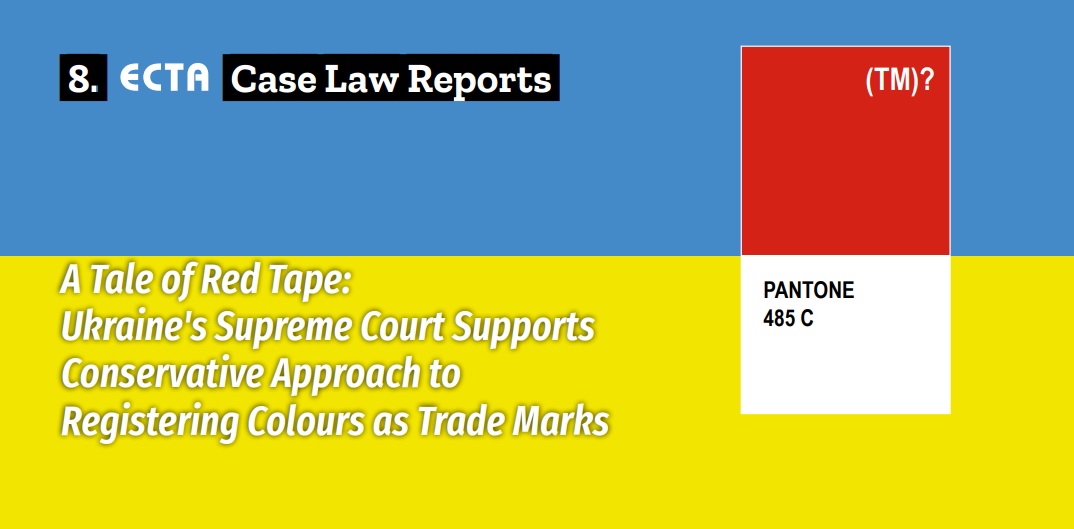Whilst Ukrainian legislation expressly permits the registration of colour as a trade mark, the Ukrainian Patent and Trademark Office (UKRPATENT) has remained conservative in its approach to the examination of colour marks allowing only very few to achieve registration. No detailed administrative regulation or judicial guidance on the topic was available until the Supreme Court issued its decision of 18 November 2021 in a landmark case, No. 910/9610/18.
Case background
Roshen, one of the largest confectionery companies in Ukraine, filed application No. m201710458 seeking to trade mark the red colour (Pantone 485c) of its packing stripes for confectionery products. The application was denied due to the mark in question (1) being inherently non-distinctive and lacking acquired distinctiveness, and (2) being deemed similar to earlier colour trade marks under international registrations No. 686691 owned by Prada S.A. and No. 667827 owned by Ferrero S.p.A. Roshen filed a lawsuit challenging the refusal. The court of first instance granted Roshen's claim, and the appellate court affirmed its judgement.
Supreme Court decision
The Supreme Court noted that a trade mark registration for a colour confers upon the holder a right to control its use in any form – which is wider than rights of other trade mark holders and can result in unfair economic advantage contrary to the public interest.
If a colour trade mark is sought, confirmation of acquired distinctiveness is a must. The applicant must prove that specific colour (or its tones) is not traditional for the respective market and not widely used by other actors for identical or similar goods and services. Otherwise, the application must be denied. The Supreme Court formulated a principal test, namely, does the colour itself enable the consumer to distinguish the goods or services of one holder from that of another without any chance of confusion? The consumers must perceive the colour in question (without any additional graphic or word element!) as denoting specific goods and services, and evidence of respective acquired distinctiveness is necessary. The Supreme Court noted that neither statutory provisions or case law prescribes an obligatory form of evidence to prove acquired distinctiveness.
In particular, the Supreme Court disregarded the sociological research report Roshen relied on because the research did not address the perception of the colour in question alone, but only combined with a golden or yellow inscription on red stripes. Any use of such stripes was found irrelevant for the case, even if prolific.
The Supreme Court concluded that acquired distinctiveness, in general, must be recognised only in exceptional circumstances when the amount of goods and services is very limited, and the market is very specific. So, securing trade mark protection for a colour should be possible for a very narrow amount of very clearly defined goods and services.
Lower courts had erred by failing to analyse whether the colour in question was used (1) as a self-sufficient object without any other graphic or word element, (2) by others aside from the plaintiff, and (3) in respect of every single good and service the plaintiff included into the application.
The Supreme Court remanded the case to the court of the first instance for reconsideration.
Conclusion
It would be premature to speculate on the final outcome of this specific case but the Supreme Court decision itself will likely become a milestone in developing the Ukrainian approach to securing registration for colour trade marks. It established the principle that trade marking a colour is generally against public interest and provided clear criteria for proving the acquired distinctiveness of a colour necessary for its registration. In doing so, it supported Ukrpatent's conservative approach to registering colours as trade marks while keeping a door open for those few colours which qualify for trade mark protection.«

